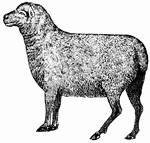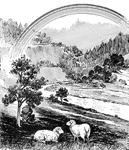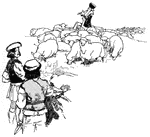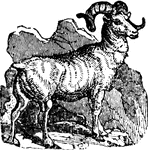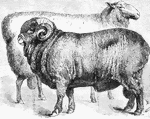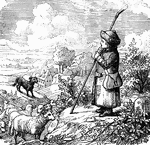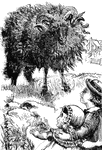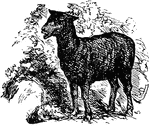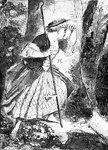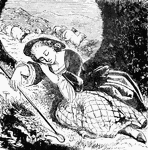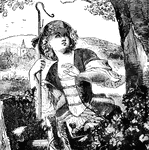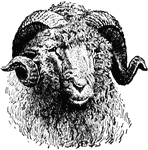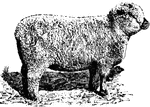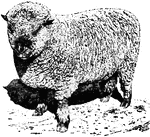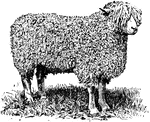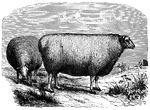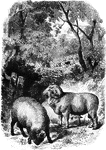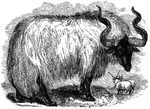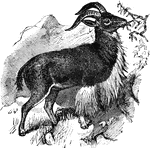
Musk Ox
Musk Ox or Musk Sheep, an animal combining characteristics of the ox and sheep; in size and shape resembling…

Sheep
Sheep are raised for their wool. This is a fat-tailed sheep, known for their obvious fat tails.
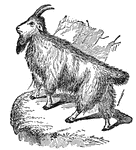
Rocky Mountain Goat
A goat is allied to the sheep. The Rocky Mountain goat is a native of the western portion of the United…
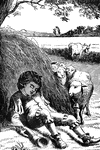
Little Boy Blue
Little Boy Blue, come blow your horn. The sheep's in the meadow, the cow's in the corn.

Little Boy Blue
Little Boy Blue, come blow your horn. The sheep's in the meadow, the cow's in the corn. Where's the…

Stafford's Store
"Going into camp at Stafford's store, Va. Third Brigade, Third Division, Sixth Corps, carrying off rails…
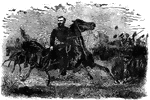
General Sheridan
"Major General Sheridan riding along the lines after the Battle of Fisher's Hills, Va., September 22nd,…

Delaine Merino Sheep
A pair of Delino merinos. They are more suited to be used for mutton, but their wool is of lesser quality…
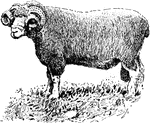
Dorset-Horn Ram
Dorset-horn ram, popular in areas where winter lambs are produced. It is claimed that a large proportion…
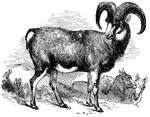
Mouflon
"The animals of this genus are distinguished by short tails, rogh hair; and enormous horns; they live…
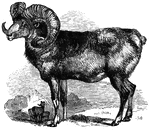
Argali
"It is remarkable, even among this active genus, for the agility with which it speeds along the rocks…
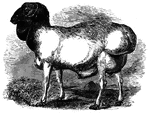
Goitred Sheep
"Has drooping ears, a convex forehead, short hair, a brisket and dewlap like those of an ox, and two…

Gauzu-Viva
"Is a delicate little deer, only twenty-six inches in length. its aspect is said to resemble that of…

Giant Kangaroo
"It is of the size of a large sheep, and sometimes weighs one hundred and fourty pounds. The period…
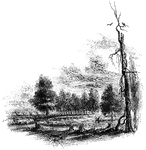
Regulator Battle-ground
"The Regulator battle-ground. This view is from the south side of the Salisbury Road, which is marked…

Western Train
"A western emigrant train. The occupation of the west. With every year the line of settlements was pushed…
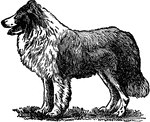
Collie
"Collie is a breed of the dog of obscure origin, which is highly valued. Many anecdotes are told of…
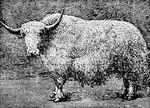
Yak
"Yak is a species of ox from the mountainous regions of Tibet. There are two races: the wild yak, generally…

Knots and Splices
"Knots and splices include all the various methods of tying, fastening, and joining ropes or cords.…
Knots and Splices
"Knots and splices include all the various methods of tying, fastening, and joining ropes or cords.…
Knots and Splices
"Knots and splices include all the various methods of tying, fastening, and joining ropes or cords.…
Knots and Splices
"Knots and splices include all the various methods of tying, fastening, and joining ropes or cords.…

Knots and Splices
"Knots and splices include all the various methods of tying, fastening, and joining ropes or cords.…

Knots and Splices
"Knots and splices include all the various methods of tying, fastening, and joining ropes or cords.…
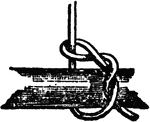
Knots and Splices
"Knots and splices include all the various methods of tying, fastening, and joining ropes or cords.…
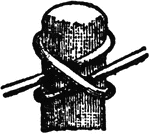
Knots and Splices
"Knots and splices include all the various methods of tying, fastening, and joining ropes or cords.…

Knots and Splices
"Knots and splices include all the various methods of tying, fastening, and joining ropes or cords.…
Knots and Splices
"Knots and splices include all the various methods of tying, fastening, and joining ropes or cords.…
Knots and Splices
"Knots and splices include all the various methods of tying, fastening, and joining ropes or cords.…
Knots and Splices
"Knots and splices include all the various methods of tying, fastening, and joining ropes or cords.…

Knots and Splices
"Knots and splices include all the various methods of tying, fastening, and joining ropes or cords.…
Knots and Splices
"Knots and splices include all the various methods of tying, fastening, and joining ropes or cords.…
Knots and Splices
"Knots and splices include all the various methods of tying, fastening, and joining ropes or cords.…
